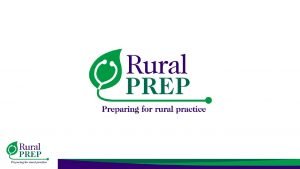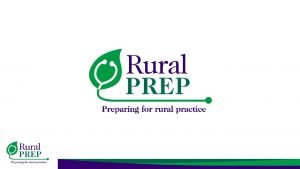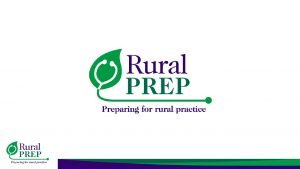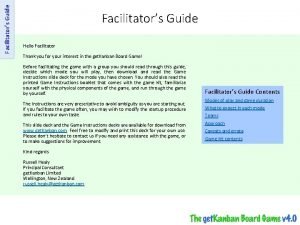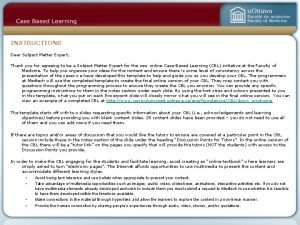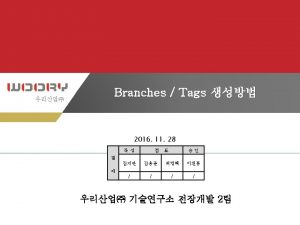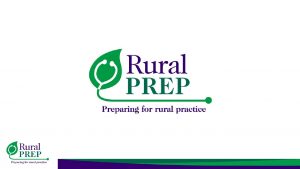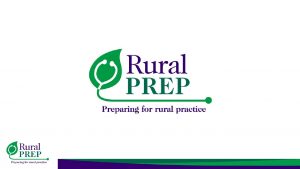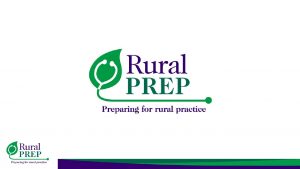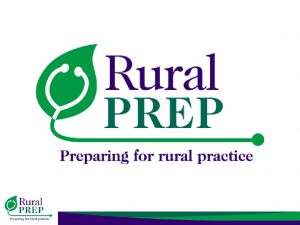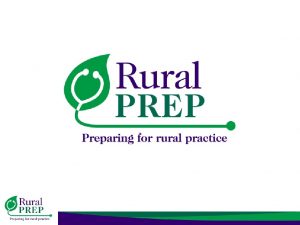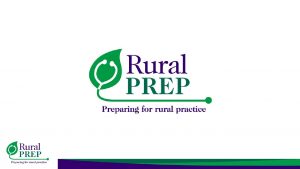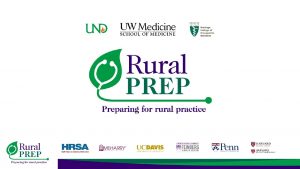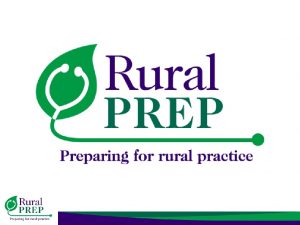A Note to Facilitators Dear Facilitator Thank you




























- Slides: 28


A Note to Facilitators Dear Facilitator, Thank you for using Rural PREP’s materials to create an active learning experience for your site. Use this slide deck, along with the Facilitator Lesson Plan, to facilitate the Grand Rounds event at your site. Many of the slides contain additional information in the presenter notes area, so be sure to review the presentation and the notes prior to your Grand Rounds event.

Session Overview • 10 minutes: Go over and discuss pre-assignment answers with the full group • 20 minutes: Watch the Presentation • 20 minutes: Facilitate the Team Activity • 5 minutes: General Discussion and Social Charge • 5 minutes: Evaluation of the Learning Materials as a group (5 minutes)

Diabetes and Pregnancy (with a rural twist) Rural PREP Grand Rounds Presenter: Bob Gobbo, MD Program Director – Providence Hood River Rural Family Medicine Residency Training Program This presentation was originally recorded on April 26 th, 2018, in front of several live, online sites connecting from different places across the country.

Objectives The participant will be able to: 1. provide a brief overview of the diagnosis of GDM and its management, including controversies regarding the treatment of gestational diabetes 2. apply evidence-based and validated management guidelines to the care of patients in rural communities 3. refer and co-manage those patients for whom all care cannot be provided within the resources of their community

Team Readiness Quiz

Team Readiness Quiz 1. According to Garrison’s (2015) article, Gestational Diabetes Mellitus (GDM) affects approximately ______ of pregnancies in the United States? a. 50% b. 1% c. 6% d. 99%

Team Readiness Quiz 1. According to Garrison’s (2015) article, Gestational Diabetes Mellitus (GDM) affects approximately ______ of pregnancies in the United States? a. 50% b. 1% c. 6% d. 99%

Team Readiness Quiz 2. According to Garrison’s (2015) article, fetal complications associated with GDM include a. Shoulder dystocia and Macrosomia b. Gestational hypertension and preeclampsia c. Low glycemic index and decreased A 1 C levels d. None of the above

Team Readiness Quiz 2. According to Garrison’s (2015) article, fetal complications associated with GDM include a. Shoulder dystocia and Macrosomia b. Gestational hypertension and preeclampsia c. Low glycemic index and decreased A 1 C levels d. None of the above

Team Readiness Quiz 3. According to Garrison’s (2015) article, initial treatment for GDM involves a. Oral medications b. Life style modifications c. Insulin therapy d. All of the above

Team Readiness Quiz 3. According to Garrison’s (2015) article, initial treatment for GDM involves a. Oral medications b. Life style modifications c. Insulin therapy d. All of the above

Team Readiness Quiz 4. According to Garrison’s (2015) article, the ideal fasting blood glucose level for women with GDM should be less than a. 140 mg per d. L b. 7. 8 mg per d. L c. 120 mg per d. L d. 95 mg per d. L

Team Readiness Quiz 4. According to Garrison’s (2015) article, the ideal fasting blood glucose level for women with GDM should be less than a. 140 mg per d. L b. 7. 8 mg per d. L c. 120 mg per d. L d. 95 mg per d. L

Team Readiness Quiz 5. According to Garrison’s (2015) article, how often should women with history of GDM be screened for overt diabetes? a. Every three years b. Every 24 weeks c. Every six to 12 weeks d. Never

Team Readiness Quiz 5. According to Garrison’s (2015) article, how often should women with history of GDM be screened for overt diabetes? a. Every three years b. Every 24 weeks c. Every six to 12 weeks d. Never

Team Readiness Quiz 6. According to the ACOG Practice Bulletin (2017) article, screening for GDM is typically performed at a. When pregnancy is confirmed b. 32 -36 weeks of gestation c. 12 -16 weeks of gestation d. 24 -48 weeks of gestation

Team Readiness Quiz 6. According to the ACOG Practice Bulletin (2017) article, screening for GDM is typically performed at a. When pregnancy is confirmed b. 32 -36 weeks of gestation c. 12 -16 weeks of gestation d. 24 -48 weeks of gestation

Team Readiness Quiz 7. According to the ACOG Practice Bulletin (2017) article, when pharmacological treatment is indicated for GDM, _____ is considered the first-line treatment a. Glyburide b. Metformin c. Insulin d. 5% Saline

Team Readiness Quiz 7. According to the ACOG Practice Bulletin (2017) article, when pharmacological treatment is indicated for GDM, _____ is considered the first-line treatment a. Glyburide b. Metformin c. Insulin d. 5% Saline

Diabetes and Pregnancy (with a rural twist) Rural PREP Grand Rounds Presenter: Bob Gobbo, MD Program Director – Providence Hood River Rural Family Medicine Residency Training Program Launch the Presentation Now

Team Activity

Team Activity Part 1 • Guadelupe is a 35 yo G 5 P 4, BMI 35 • 1 hour glucola 166 @ 27 wks • 3 hour at 29 weeks- FBS 122, 1 hour 200, 2 hour 170, 3 hour 122 • What’s her diagnosis? • How will you address her care, given the assets of your rural community, your own expertise and scope of practice?

Team Activity Part 2 • Sheila is a 26 yo G 2 P 1, BMI 27, Type I insulin-dependent diabetic, diagnosed at age 7 and without systemic complications to date – presenting for prenatal care at 6 weeks gestation • Her diabetes prior to pregnancy has generally been under good control with a Hgb. A 1 C of 6. 2 • She was followed by a perinatal specialist during her previous pregnancy, induced at 36 weeks at the regional center an hour away; unfortunately, the infant died of Group B Strep 48 hours after birth • She wants you to follow her this time. • How would you care for her?

Discussion

Social Charge What are you personally going to do with this information?

Evaluation Please evaluate these learning materials as a group: https: //goo. gl/forms/pep. Xm. Wt. JMRy. Fls 662

 Thank you message to a training facilitator
Thank you message to a training facilitator Thank you message to training facilitator
Thank you message to training facilitator Thank you for your facilitation
Thank you for your facilitation Community facilitator cover letter
Community facilitator cover letter Thank you facilitator
Thank you facilitator Thank you facilitator
Thank you facilitator Dear kate thank you for your letter
Dear kate thank you for your letter My dear students. how are you, today?
My dear students. how are you, today? Dear ben thank you for your letter
Dear ben thank you for your letter How to thank a training facilitator
How to thank a training facilitator Vmpi virginia
Vmpi virginia External facilitators advertising
External facilitators advertising External facilitators advertising
External facilitators advertising Thank you note to subject matter expert
Thank you note to subject matter expert Thank you note to building superintendent
Thank you note to building superintendent Thank you note to preceptor after orientation
Thank you note to preceptor after orientation Thank you note to preceptor after orientation
Thank you note to preceptor after orientation Thank you note to preceptor after orientation
Thank you note to preceptor after orientation Thank you for listening
Thank you for listening Thank you for the lamb
Thank you for the lamb Thank you lord for dying on the cross for me
Thank you lord for dying on the cross for me Thank you for your attention do you have any questions
Thank you for your attention do you have any questions Difference between note making and note taking
Difference between note making and note taking Signal word
Signal word Difference between note making and note taking
Difference between note making and note taking Goods received note vs delivery note
Goods received note vs delivery note What is debit note and credit note
What is debit note and credit note Debit note format
Debit note format Note taking definition
Note taking definition
